The blood is visible from space as bodies pile up from a slaughter unprecedented in recent times.
Surrounded by a sand barrier built during an 18-month siege, most of the 250,000 people in el-Fasher, in western Sudan, have been trapped as paramilitary fighters from the Rapid Support Forces (RSF) have rampaged through the city. Experts estimate tens of thousands have been killed in the past week.
With the key regional capital under a communications blackout, it has been left to eyewitness accounts as well as satellite imagery and video shared on social media to reveal the scale of what is unfolding in el-Fasher and the surrounding Darfur region, prompting humanitarian organizations to warn that the northeast African nation is returning to its genocidal past.
NBC News spoke to one of the few residents who made it out.
After the Sudanese military withdrew from the city, Mutaz Mohamed Musa said he joined thousands of people attempting to leave el-Fasher on Saturday. But almost immediately they came under shellfire, before they were surrounded by RSF fighters in pickup trucks, he said.
“They opened direct fire on civilians,” Musa, 42, said in a voice note Thursday, adding that it was “extremely intense and people scattered in all directions” as they were chased and run over by the trucks.
He said he thought only about 150 people made it past the berm — the sand wall built around el-Fasher by the RSF as it laid siege to the city.
Musa was captured along with dozens of others, and he said RSF fighters executed people in front of him. “They would ask a man to run,” he said. “Once you start running, they shoot you.”
He was freed after his family agreed to pay a ransom over the phone, he said, adding that he made his way to Tawila, a small town around 30 miles west of el-Fasher, arriving on Tuesday.
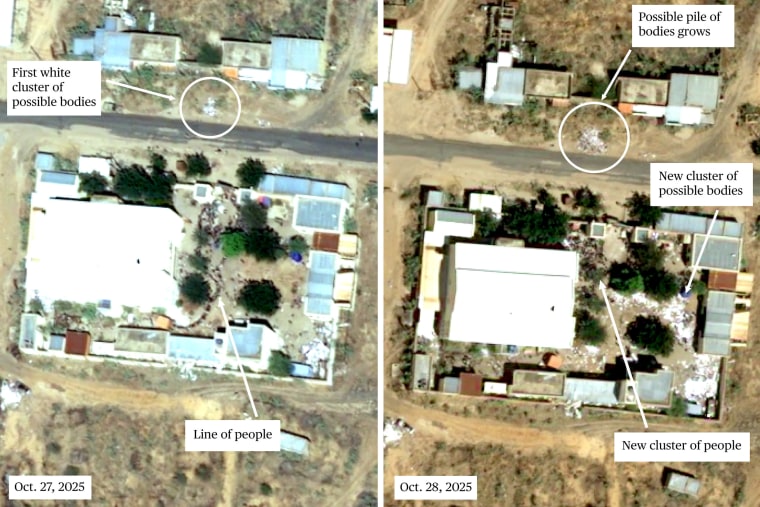 In satellite imagery collected on Monday, clusters of dark colored objects consistent with people create a large line outside a former children's hospital, stretching from the building to the gate of the compound. Across the street, a new cluster of white objects appear that are not seen in imagery collected on Sunday.
In imagery collected on Tuesday, dark colored objects of a similar size and color as the line seen in previous imagery now appears tightly grouped together. In the same
image, a new set of light-colored objects appears in the southeast corner of the compound. Across the street, the object cluster appears to grow.Airbus DS (2025)
In satellite imagery collected on Monday, clusters of dark colored objects consistent with people create a large line outside a former children's hospital, stretching from the building to the gate of the compound. Across the street, a new cluster of white objects appear that are not seen in imagery collected on Sunday.
In imagery collected on Tuesday, dark colored objects of a similar size and color as the line seen in previous imagery now appears tightly grouped together. In the same
image, a new set of light-colored objects appears in the southeast corner of the compound. Across the street, the object cluster appears to grow.Airbus DS (2025)The RSF did not respond to NBC News’ request for comment about Musa’s account.
Arjan Hehenkamp, the Darfur crisis lead for the International Rescue Committee in Sudan, said in a video call Thursday that about 5,000 people have made their way out of el-Fasher to Tawila, where a number of nongovernment organizations support a camp for internally displaced people.
“It’s a trickle,” he said, adding that it was “disturbing” that so few had managed to reach the town.
Those who have made it are mostly women and children, Justine Muzik Piquemal, the regional director of the French nongovernmental organization Solidarites International, said in a separate interview Wednesday.
Along the road “the women are being raped,” she said, adding that many were trekking across the desert to avoid militias on the road. “They have nothing with them.”
Videos uploaded to social media by RSF fighters show scenes of carnage in the city they left behind.
One, filmed near the berm, shows dozens of bodies on the ground and fighters with RSF insignia walking among them as vehicles burn nearby and sporadic gunfire pops off in the background.
“We killed them,” the man who took the video, which has been verified by NBC News, can be heard saying. “They are just dust now.”
Another shows an RSF commander, whom NBC News has identified as Abu Lulu, shooting at a line of men sitting on the ground.
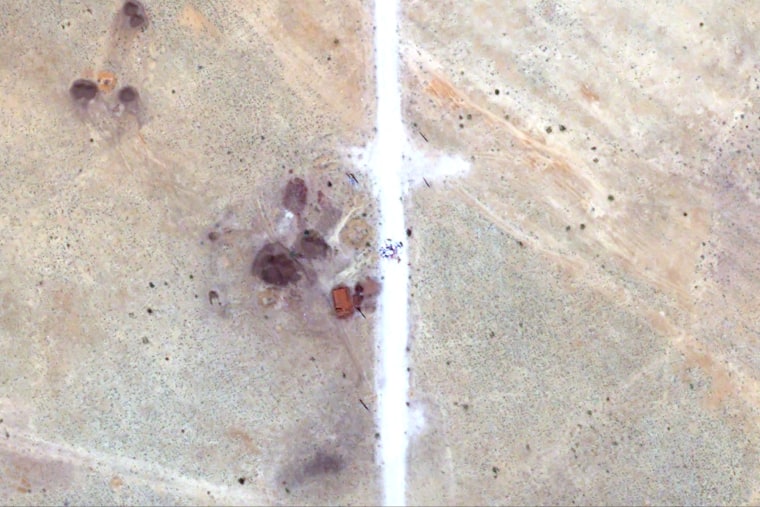 Objects and ground discoloration near el-Fasher on Monday.Airbus DS (2025)
Objects and ground discoloration near el-Fasher on Monday.Airbus DS (2025)Fighting has raged in Sudan since war broke out in April 2023 between the Sudanese military, controlled by the country’s top commander and de facto ruler, Gen. Abdel-Fattah Burhan, and his former deputy, Gen. Mohammed Hamdan Dagalo — a former camel dealer widely known as Hemedti who leads the RSF.
Both men were leaders of a counterinsurgency against an uprising in the region, a conflict that in 2005 led to the longtime dictator Omar al-Bashir becoming the world’s first sitting leader to be indicted by the International Criminal Court on suspicion of genocide.
Burhan and Dagalo were part of the military establishment that helped oust al-Bashir in 2019 after widespread popular unrest. Two years later, they agreed to rule together after a coup that brought down the Western-backed government of Prime Minister Abdalla Hamdok.
However, their alliance spectacularly broke down over how to manage the transition to a civilian government, and with neither seemingly willing to cede power, fighting broke out.
Since then, Sudan’s military government has repeatedly accused the United Arab Emirates of supplying arms to the RSF and has brought a case to the International Court of Justice, accusing it of being complicit in genocide in West Darfur. The Emiratis have denied the charges.
But in one of its last acts, the Biden administration declared that the RSF and its allies were committing genocide in a war that has led to the world’s worst humanitarian crisis, with part of the country, including the el-Fasher area, plunged into famine. Over 14 million people have fled their homes.
With so many displaced and reliable data unavailable, estimates vary widely on the number of dead, but as of May the United Nations said 40,000 people had been killed. The actual toll is likely much higher.
 Objects and ground discoloration near the berm in el-Fasher, captured on Monday.Airbus DS (2025)
Objects and ground discoloration near the berm in el-Fasher, captured on Monday.Airbus DS (2025)After withdrawing from el-Fasher — its last stronghold in Darfur — the army said it was hoping to save civilians from further violence. Burhan said the military retreated because of “the systemic destruction, and the systemic killing of civilians” by the RSF.
In a video message Wednesday on the RSF’s official Telegram account, Dagalo said an investigation had been launched into what he called violations committed by his soldiers during the capture of el-Fasher. The following day, the RSF published a guidance on the same channel that said its fighters should “protect civilians, facilitate their movement, and provide assistance to them.”
It has subsequently announced the arrest of several men for human rights violations, including Abu Lulu, the man filmed shooting men on the ground.
But Nathaniel Raymond, the executive director of the Humanitarian Research Lab at the Yale School of Public Health, said that after studying high-resolution satellite images, his team had seen “activity that suggests mass killing on a level that can only be compared to Rwanda,” where an estimated 800,000 people were killed in 1994 by armed militias from a rival ethnic group.
“We have never seen a velocity of violence at this scale,” he said in a telephone interview Wednesday, adding that his team could see bodies piling up in the streets in satellite images, pools of blood around them.
Outside el-Fasher’s former children’s hospital, he said images taken on Monday showed dark dots consistent with people lining up. Nearby, he said, there was a cluster of “white objects,” presumably bodies lying on the ground.
An image taken the following day shows the bodies piling up all across the compound.
“We’re in the tens of thousands in terms of all the body-consistent objects on the ground,” Raymond said. “They are moving like a wood chipper, and they are killing everything that moves.”
The RSF did not respond to NBC News’ request for comment about the piles of bodies outside the hospital and elsewhere in the city.
But Raymond said he feared the paramilitary group, which grew out of the notorious Janjaweed Arab militias that carried out a genocide during the Darfur conflict in the 2000s, was “finishing the liquidation of Darfur.”
“This is the final battle of the Darfur genocide,” he said.
.png)
 13 hours ago
9
13 hours ago
9

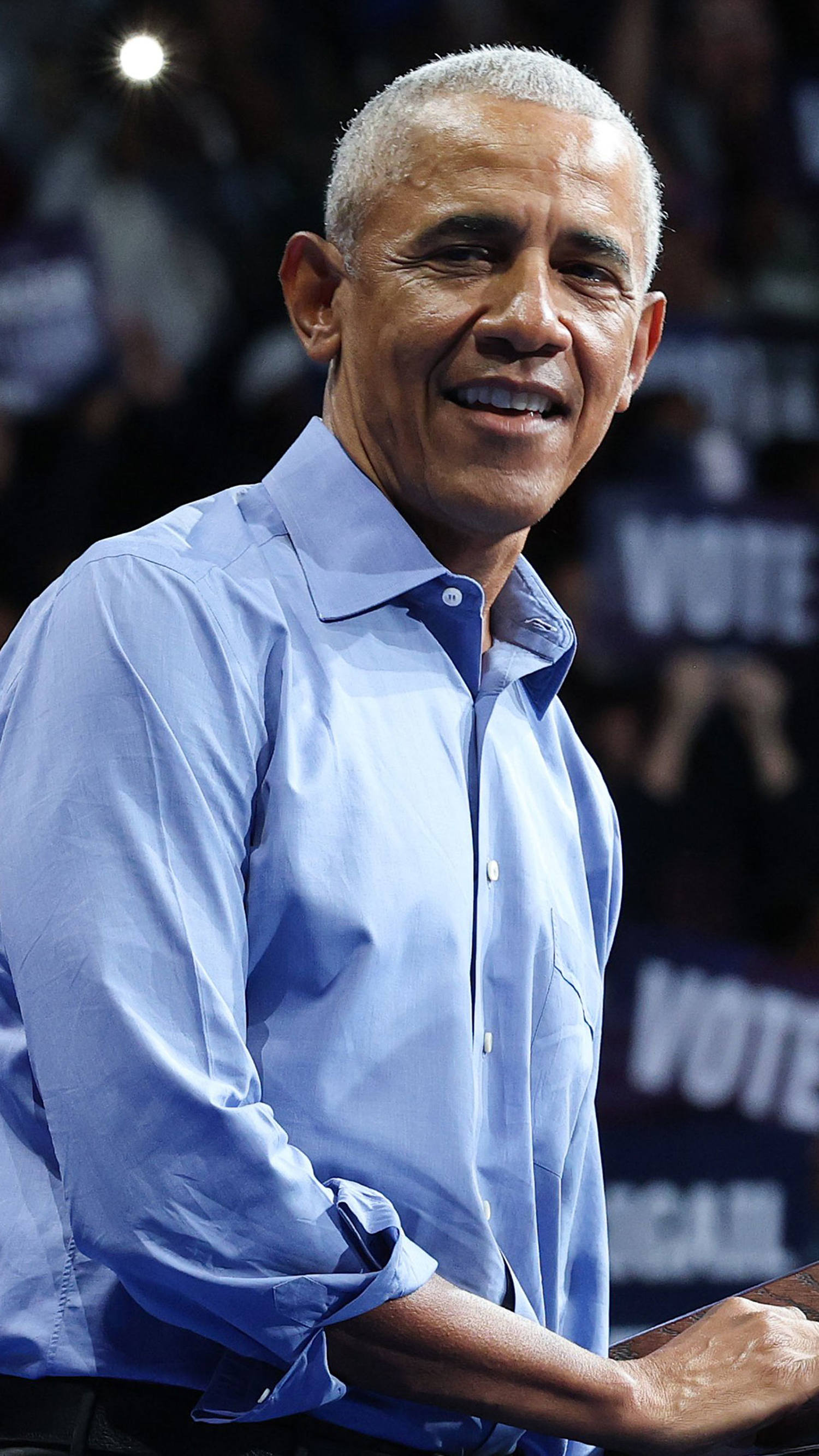

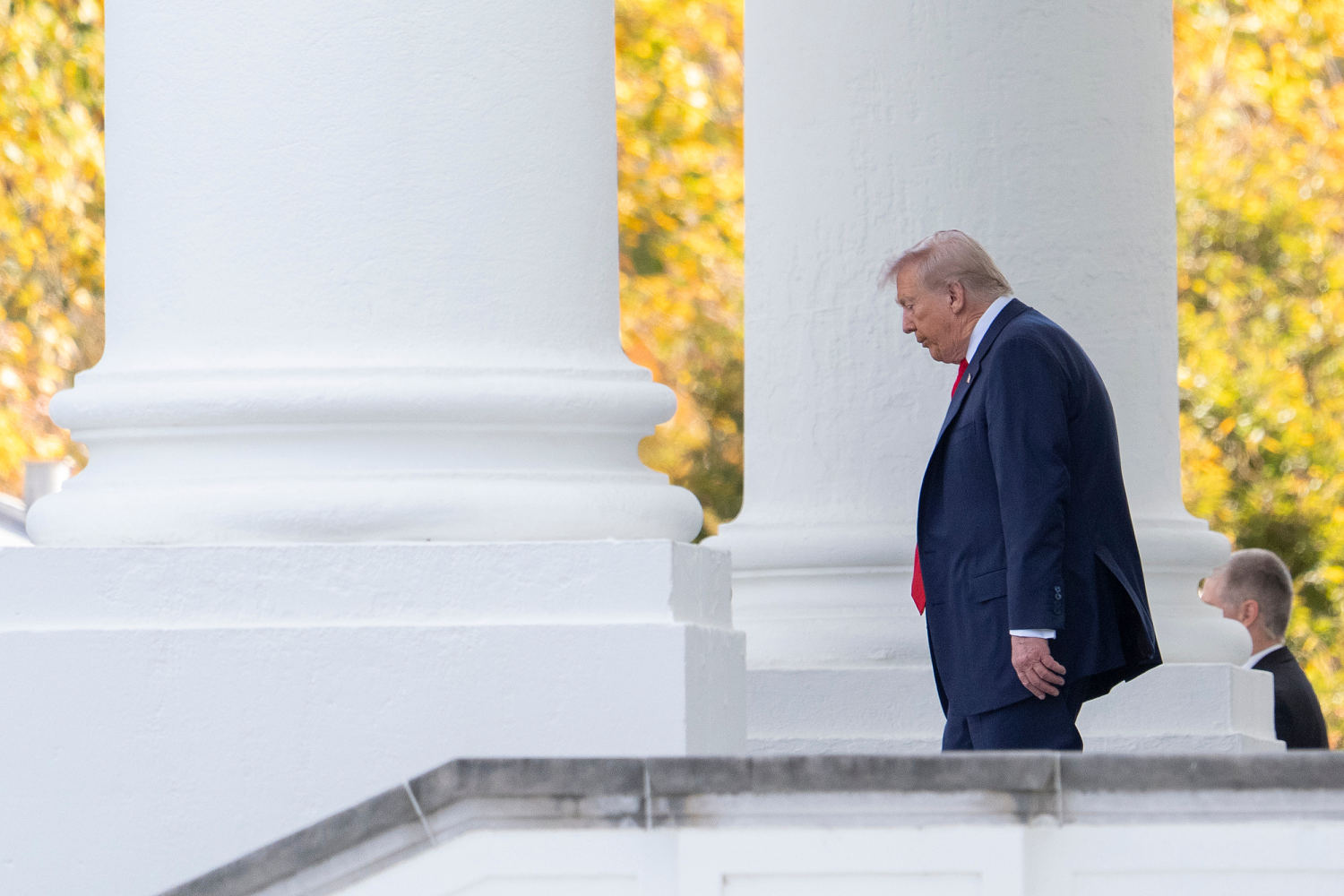



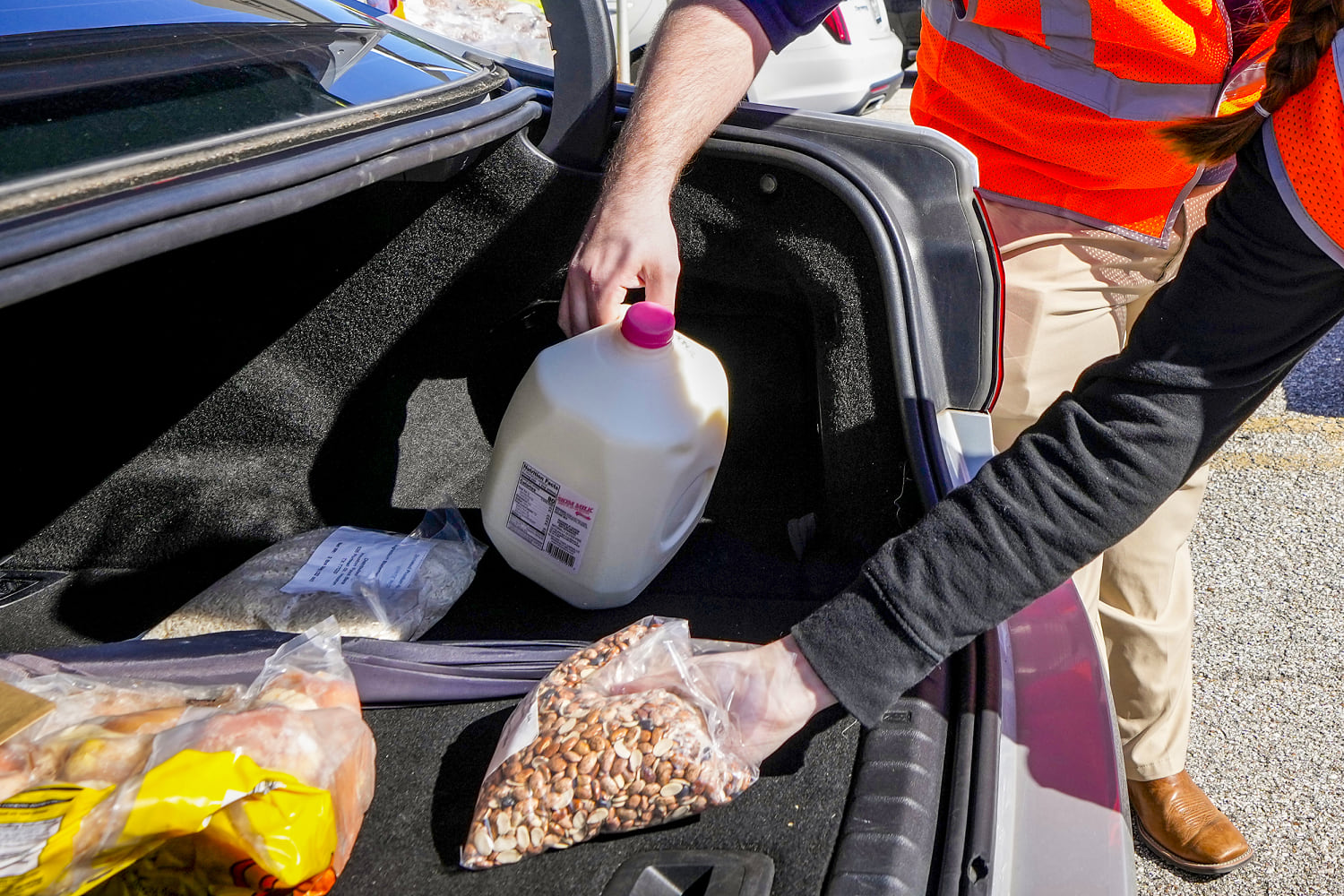






















 Bengali (BD) ·
Bengali (BD) ·  English (US) ·
English (US) ·